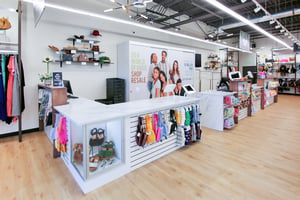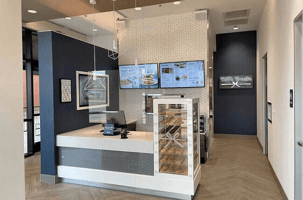Designing physical learning spaces is a crucial element in the quest for excellence in education. Educational settings are becoming dynamic spaces that foster exploration, collaboration, and individual attention. A significant aspect of this change is the effective implementation of millwork and thoughtful design of educational and training spaces, which can facilitate diverse teaching methods and learning styles.
The Role of Millwork in Educational and Training Spaces
The versatility and strength of custom millwork, which involves the production of customized fixtures and furniture from wood and wood laminates, make it a popular choice for educational purposes. Here’s just a few different ways that millwork is being used to create more dynamic learning environments:
Flexibility and Adaptability
Modern education demands flexibility. Educational and training spaces can be adapted to various teaching styles and learning activities through the use of custom-made millwork that is modular. Movable workstations, foldable desks and flexible shelves can be used to convert a traditional classroom into a collaborating workspace or lecture hall, or as a quiet study space.
Durability and Sustainability
Furniture and fixtures in educational spaces must be robust enough to endure years of use. The cost-effectiveness of millwork is due to its ability to withstand the toughness required for everyday use. In addition, schools and training spaces can utilize environmentally friendly materials and finishes, while also offering secure environments for students and staff.
Aesthetics and Learning
The aesthetics of a learning environment can significantly impact student engagement and well-being. Schools and training spaces have the ability to create visually appealing spaces that promote creativity and education, thanks to infinite customization options. Each space can have a unique look and feel, with custom millwork pieces that blend in seamlessly with the educational goals of its inhabitants.
Designing Educational and Training Spaces for Tomorrow’s Learners
Several key design principles will determine how educational spaces will look in the future:
Encouraging Collaboration
Spaces that encourage group work and discussion are crucial in the progression of collaborative learning. Open areas designed with movable millwork pieces can be used to create situations where students will spontaneously meet and collaborate on problems, ideas, or work together.
Supporting Technology Integration
Technology is an integral part of modern education, and learning environments must be designed with this in mind. With custom millwork that conceals cables and hardware, tech-friendly spaces are now more accessible and less cluttered. Designed with integrated charging points, the media units' ability to read digital displays and interactive whiteboards make learning more efficient, while also keeping the space for desks and tables less congested with technology.
Personalizing Learning Experiences
The understanding that people learn differently requires the provision of distinct experiences in educational and training settings. By incorporating custom-made areas for quiet reading, standing tables for active learning, and soft seating for informal discussions, students can choose the most effective way to learn.
Conclusion
Educational spaces are evolving, and millwork is becoming a key component in the transformation of traditional classrooms into engaging learning and training environments. The use of bespoke woodwork can create spaces that are both functional and visually appealing. With a view to the future, millwork and original design principles will continue to influence educational and training spaces that are diverse and dynamic, catering to all types of learners.






.png?width=203&height=142&name=IFA%20Member%20Logo%20EPS%20(1).png)
.png%20for%20web.png?width=203&height=94&name=2022_VetFran_Logo%20(002).png%20for%20web.png)
.png?width=203&height=150&name=ICSC-logo-tag-full-color%20(1).png)